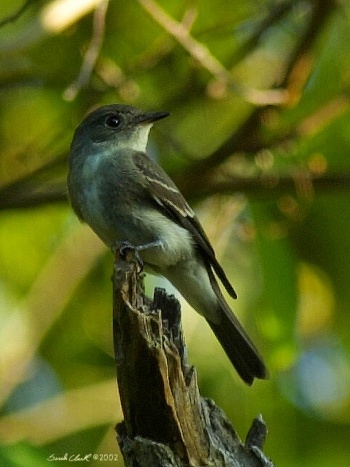(No difference)
|
Revision as of 17:37, 22 April 2007
Identification
The empidonax flycatchers are very difficult to tell apart. The safest way to differentiate them is by habitat, range, and voice in the breeding season. Differences in plumage due to molt, wear and age make the plumage quite variable. A combination of features is helpful for identifying this species: size-it is larger than Yellow-bellied and Least, color-it has greener upperparts and yellower underparts than all but the Yellow-bellied. The Yellow-bellied flycatcher is usually more yellow underneath-especially on the throat, is smaller and more active, and has a smaller bill. Alder and Willow are browner above and whiter below with less obvious eye rings. Least is smaller, grayer above and whiter below and has a smaller bill. Empidonax flycatchers from the western United States have darker lower mandibles, and whiter underparts (Gray and Dusky), darker breasts (Hammond's), or oval eye rings (Pacific Slope and Cordilleran) as well as different ranges. Pewees are larger, browner above, whiter below and have indistinct eye rings.
Range
From southeastern South Dakota east across southern Great Lakes region to southern New England, south to southern Texas, Gulf Coast, and central Florida, west to central Kansas; in Canada, restricted to southwestern Ontario. The highest nesting densities are in the Cumberland Plateau and in Virginia and West Virginia. Inhabits large tracts of mature, mesic, forests with shrubby understory, generally near a stream or ravine. Forests are typically deciduous, but include hemlock ravines, cedar swamps, pine-oak woodland, and conifer plantations. Often associated with streams or swamps within larger dry forests.




